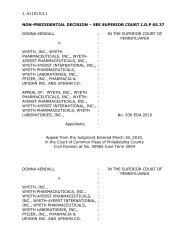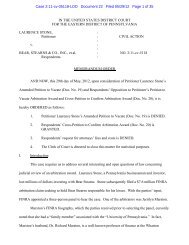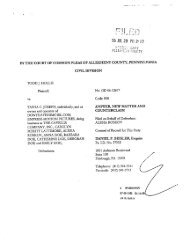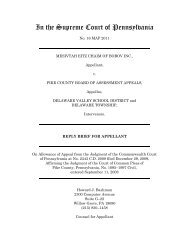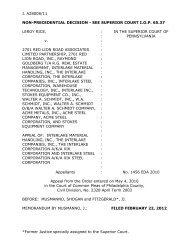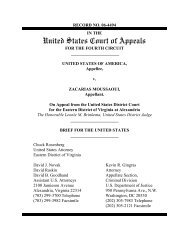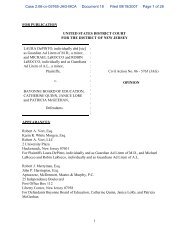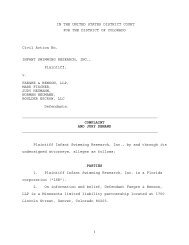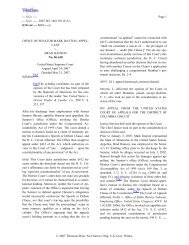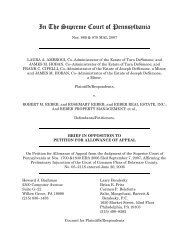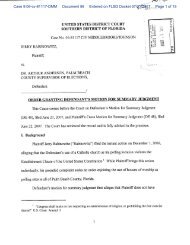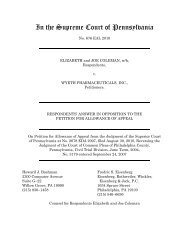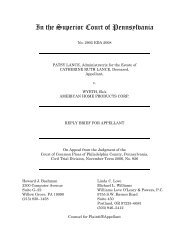petition for rehearing en banc - How Appealing
petition for rehearing en banc - How Appealing
petition for rehearing en banc - How Appealing
You also want an ePaper? Increase the reach of your titles
YUMPU automatically turns print PDFs into web optimized ePapers that Google loves.
or not only begs the question but also gets the Chapman analysis exactly backwards. See<br />
Yates, 500 U.S. at 406-07 n.11. As the b<strong>en</strong>eficiary of the error, it was the governm<strong>en</strong>t’s bur-<br />
d<strong>en</strong> to prove beyond a reasonable doubt that the jury did not take the easy way out.<br />
The unanimity instructions on fraud, which the panel also did not m<strong>en</strong>tion, further dem-<br />
onstrate the sheer impossibility of the governm<strong>en</strong>t’s task. The district court rejected a de-<br />
f<strong>en</strong>se request that the jurors be instructed they could convict only if they agreed unanimously<br />
on the theory of fraud—i.e., theft or honest services. Tr. 13477. Because these two theories<br />
operated as alternative means of establishing the same “scheme to defraud” elem<strong>en</strong>t, the in-<br />
structions required jury unanimity only on whether a scheme existed, not on which theory<br />
supported that elem<strong>en</strong>t. In other words, each juror who voted to convict might choose theft,<br />
honest services, or both. Id. at 13476-78. The fraud convictions there<strong>for</strong>e could rest <strong>en</strong>tirely<br />
or partially on honest services. To establish that the instructional error was harmless beyond<br />
a reasonable doubt the governm<strong>en</strong>t must demonstrate, there<strong>for</strong>e, that the flawed instructions<br />
did not affect the vote of any juror. The panel did not remotely suggest that this is possible,<br />
much less provable beyond a reasonable doubt. 3<br />
2. The panel’s assessm<strong>en</strong>t of the supposed str<strong>en</strong>gth of the governm<strong>en</strong>t’s case also ig-<br />
nored all evid<strong>en</strong>ce that favored the def<strong>en</strong>se and, remarkably, the sweeping acquittals. The<br />
jury could of course convict without ev<strong>en</strong> considering the theft charge, but it could only ac-<br />
quit after considering—and rejecting—both of the governm<strong>en</strong>t’s theories of fraud. The large<br />
number of acquittals—including nine counts of mail and wire fraud—thus compellingly<br />
demonstrates that this jury found the governm<strong>en</strong>t’s case so unworthy of belief that it was un-<br />
3 Indeed, in the original appeal the panel adopted a <strong>for</strong>feiture rule that permitted the governm<strong>en</strong>t to<br />
retain a tainted conviction precisely in those circumstances in which the governm<strong>en</strong>t cannot meet that<br />
burd<strong>en</strong>. Recognizing the inher<strong>en</strong>t ambiguity of the guilty verdict, the panel had accepted the governm<strong>en</strong>t’s<br />
theory that, by declining a special verdict, def<strong>en</strong>dants were to blame <strong>for</strong> the ambiguity.<br />
The Supreme Court, however, unanimously rejected a rule that def<strong>en</strong>dants <strong>for</strong>feit their appellate<br />
rights wh<strong>en</strong> declining a special verdict. It strains credulity to suppose the governm<strong>en</strong>t proposed that<br />
<strong>for</strong>feiture rule—and def<strong>en</strong>ded it all the way to the United States Supreme Court—if it could so easily<br />
establish the abs<strong>en</strong>ce of prejudice under conv<strong>en</strong>tional standards.<br />
8



